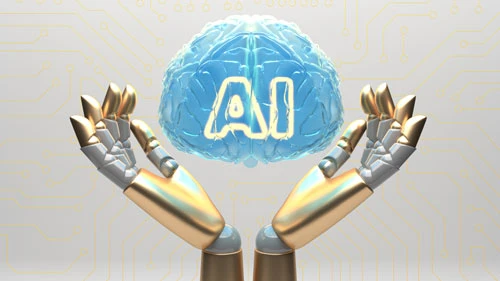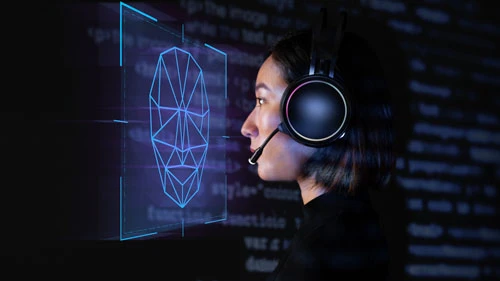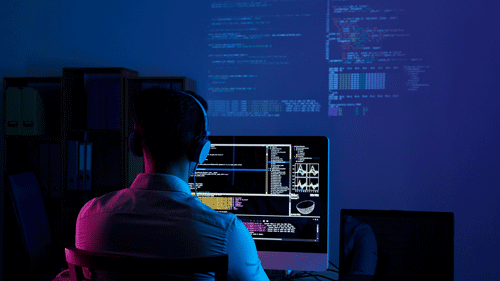Containerization has revolutionized software development and deployment, allowing faster and more efficient application delivery. However, while container technology offers numerous benefits, it also brings new challenges, particularly in terms of security. This blog post will delve into the crucial role of human awareness and training in container security. We will explore the significance of training developers to identify and report security vulnerabilities, ultimately highlighting the importance of the human factor in maintaining robust container security.
The Rise of Containerization and Its Security Implications
Containerization, epitomized by popular tools like Docker and Kubernetes, has transformed how we develop, deploy, and scale applications. Containers encapsulate software and its dependencies, providing consistency across different environments.
However, as organizations adopt container technology, they must grapple with security concerns unique to this paradigm. While containers offer isolation and limited attack surfaces, vulnerabilities can still emerge due to misconfigurations, outdated dependencies, or unpatched software. Here, human awareness and training play an instrumental role in bolstering container security.
The Human Factor
Developers form the backbone of container security, and it is crucial to equip them with the necessary knowledge and skills to identify and mitigate potential vulnerabilities. Regular security awareness training is vital to instilling a security-centric mindset among developers. This training should cover secure coding practices, common container vulnerabilities, and adhering to security best practices.
By fostering a culture of security awareness, organizations can empower developers to identify and report potential risks proactively. This reduces the likelihood of security breaches, protects valuable data, and bolsters overall container security.
Training Developers to Identify and Report Vulnerabilities
To effectively enhance container security, organizations must invest in comprehensive training programs to educate developers about identifying and reporting vulnerabilities. Such training should encompass the following elements:
- Understanding Container Security: Developers must grasp the fundamentals of container security, including the principles of container isolation, secure container image creation, and vulnerability scanning. This knowledge forms the foundation for secure containerization practices.
- Identifying Common Vulnerabilities: Training should focus on educating developers about common container vulnerabilities, such as insecure configurations, unpatched software, and insufficient access controls. Developers can proactively implement security measures and remediation strategies by recognizing these vulnerabilities.
- Secure Coding Practices: Developers should be trained on secure coding practices specific to containers, such as avoiding hard-coded secrets, utilizing container-native security features, and conducting regular security audits. From the outset, incorporating security into the development process helps prevent vulnerabilities from entering the containerized environment.
- Reporting and Collaboration: Encouraging developers to report security vulnerabilities is vital for effective container security. Organizations should establish clear reporting channels and processes, ensuring developers feel comfortable raising concerns without fear of retribution. Collaboration between developers, security teams, and DevOps personnel promotes a culture of shared responsibility and swift vulnerability resolution.
While container technology provides numerous benefits, its security must be noticed. The human factor in container security is critical, and organizations must invest in training and fostering awareness among developers.
Organizations can significantly enhance container security by equipping developers with the necessary knowledge and skills to identify and report vulnerabilities. Only through a combination of robust technology and a security-centric human element can we ensure the resilience of containerized applications in an ever-evolving threat landscape.
In today's interconnected digital landscape, where security threats loom large, organizations continually seek robust solutions to protect their systems and data. Containers have become popular due to their lightweight, scalable, and portable nature.
However, securing containerized environments remains a significant concern. In the aftermath of a security threat, container security platforms play a vital role in identifying vulnerabilities, mitigating risks, and ensuring the integrity and resilience of containerized applications. This blog post will explore how container security platforms help organizations respond to security threats effectively.
- Rapid Detection and Response
Container security platforms enable organizations to detect security threats in their containerized environments rapidly. These platforms can identify anomalies or suspicious activities by monitoring container behavior and network traffic. Through advanced threat intelligence and machine learning algorithms, security platforms can detect known and unknown threats, including malware, zero-day exploits, and unauthorized access attempts. This proactive approach allows organizations to respond swiftly and contain the threat before it causes substantial damage.
- Vulnerability Management
Containers are built on various layers of software components, including the operating system, container runtime, and dependencies. Each layer may have its vulnerabilities that attackers can exploit. Container security platforms assist in vulnerability management by continuously scanning container images and underlying layers to identify known vulnerabilities and security misconfigurations. They provide vulnerability assessment reports, enabling organizations to prioritize and remediate vulnerabilities promptly. Organizations can reduce the attack surface and enhance their security posture by keeping containers updated with patches and security updates.
- Runtime Protection
Container security platforms offer runtime protection to ensure the security and integrity of containerized applications during execution. These platforms enforce security policies and restrict unauthorized container activity by implementing runtime monitoring. They monitor system calls, file system changes, network connections, and container orchestration events to detect malicious behavior or abnormal activities. In the event of a security threat, runtime protection mechanisms can automatically quarantine or terminate compromised containers, preventing the attack's spread and minimizing the impact on the entire environment.
- Compliance and Auditing
Maintaining regulatory compliance is crucial for organizations across various industries. Container security platforms assist in compliance management by providing auditing and reporting capabilities. They generate detailed logs and audit trails of container activities, including image deployments, runtime events, and access control actions.
These platforms also offer integration with security information and event management (SIEM) systems, enabling centralized monitoring and analysis of container security events. Organizations can avoid penalties and reputational damage by ensuring compliance with industry regulations and internal security policies.
- Incident Response and Forensics
In the aftermath of a security incident, container security platforms facilitate effective incident response and forensic analysis. They provide:
- Visibility into the attack vectors.
- Compromised containers.
- The extent of the breach.
By capturing real-time data and historical logs, these platforms enable organizations to conduct thorough investigations, understand the attack methodology, and identify potential security gaps. This knowledge helps strengthen security controls and implement preventive measures to mitigate future risks.
- Continuous Security Monitoring
Container security platforms offer continuous monitoring capabilities that enable organizations to maintain a robust security posture. They provide real-time visibility into the container environment, including image registries, container orchestration platforms, and runtime behavior.
By monitoring for potential security threats, anomalous activities, and compliance violations, these platforms help organizations stay vigilant and respond promptly to emerging risks. Continuous security monitoring ensures that containers remain secure throughout their lifecycle and enables proactive threat hunting.
Container security platforms play a pivotal role in the aftermath of a security threat by assisting organizations in identifying vulnerabilities, responding swiftly, and maintaining the integrity of containerized applications. These platforms offer rapid detection and response, vulnerability management, runtime protection, compliance and auditing capabilities, and incident response.
Open-source software has revolutionized how software is developed and distributed, providing access to a wealth of powerful and customizable tools for developers worldwide. However, with the increasing popularity of open-source ecosystems, there has been a rising trend of malicious packages being introduced into these ecosystems.
These malicious packages can include malware, viruses, and other forms of malicious code that can cause significant harm to users and systems. This blog post will discuss the rising trend of malicious packages in open-source ecosystems and how to mitigate them.
How are Malicious Packages Being Introduced in Open Source Ecosystems?
Open-source ecosystems are vulnerable to malicious packages for many reasons. One of the main reasons is the lack of strict control over who can contribute to open-source projects. Anyone can contribute code to an open-source project, meaning verifying the quality and security of the code being introduced into the ecosystem is difficult.
Another reason is the lack of effective security measures in place to prevent the introduction of malicious packages. Open source ecosystems are often decentralized and rely on trust between developers to ensure the integrity of the code being contributed. This trust can be exploited by malicious actors who introduce malicious packages into the ecosystem.
Malicious Packages on the Rise in Open Source Environments
The rising trend of malicious packages in open-source ecosystems is a growing concern for developers and organizations alike. In recent years, there have been several high-profile incidents where malicious packages have been introduced into open-source ecosystems, causing significant damage to systems and users.
One such incident occurred in 2018 when a malicious package called event-stream was introduced into the popular Node.js ecosystem. The package contained malicious code designed to steal Bitcoin wallets from users who had downloaded the package. This incident highlighted the vulnerability of open-source ecosystems and the need for better security measures to prevent the introduction of malicious packages.
How to Mitigate the Risk of Malicious Packages in Open-Source Ecosystems
Several measures can be taken to mitigate the risk of malicious packages in open-source ecosystems. These measures include:
1. Code Review
One of the most effective ways to prevent the introduction of malicious packages is to conduct thorough code reviews. Code reviews involve examining code contributions to ensure they meet quality and security standards. This can help identify and remove malicious packages before they are introduced into the ecosystem.
2. Vulnerability Scanning
Vulnerability scanning involves using automated tools to scan code for known vulnerabilities and security issues. This can help to identify and remove any potential security risks before they are introduced into the ecosystem.
3. Access Control
Access control involves implementing strict controls over who can contribute to open-source projects. This can include requiring contributors to undergo a vetting process or limiting access to certain parts of the codebase. By implementing access control measures, it is possible to reduce the risk of malicious packages being introduced into the ecosystem.
4. Security Testing
Security testing involves testing code for potential security vulnerabilities and weaknesses. This can include penetration testing and other security testing to identify and mitigate potential security risks.
5. Continuous Monitoring
Continuous monitoring involves monitoring the ecosystem for any signs of malicious activity or suspicious behavior. This can help identify and respond to potential threats before they can cause significant damage.
The rising trend of malicious packages in open-source ecosystems is a growing concern for developers and organizations. However, implementing effective security measures can mitigate the risk of malicious packages being introduced into open-source ecosystems.
As the popularity of open-source ecosystems continues to grow, developers and organizations must take steps to ensure the security and integrity of these ecosystems.
Artificial intelligence (AI) has become an increasingly popular tool for automating repetitive tasks and increasing efficiency across various industries. In the realm of software development, AI is often used to generate code, automate testing, and even deploy applications.
While AI has certainly made significant strides in this area, there are still some things that only humans can do when it comes to coding and DevOps. This blog post will explore what AI code writing can't do that only humans can.
1. Expressing Creativity
One of the essential things AI code writing can't do is exercise creativity. While AI can certainly generate code based on predetermined rules and patterns, it lacks the ability to come up with truly original ideas. This is because creativity is a uniquely human trait influenced by factors such as personal experience, emotions, and intuition.
In DevOps, creativity is essential for tasks such as problem-solving and innovation. For example, if a software application encounters a problem, an AI algorithm may be able to suggest solutions based on previous instances of the same issue. However, a human developer can come up with a completely new and innovative approach that an AI algorithm could not have predicted.
2. Understanding the Big Picture
Another thing AI code writing needs help with is understanding the big picture. While AI can certainly analyze and process vast amounts of data, it cannot comprehend the broader context in which that data exists. This is particularly important in DevOps, where a software application is typically just one part of a more extensive system or ecosystem.
Human developers can consider the larger context of a software application and how it interacts with other systems and stakeholders. This allows them to make decisions that are in the best interest of the entire system rather than just optimizing for a single metric or objective.
3. Empathy
Empathy is another trait that AI code writing can't replicate. While AI can simulate human conversation and interaction to a certain extent, it cannot truly understand and respond to human emotions. This is particularly important in DevOps, where developers often work with end-users or stakeholders who may have strong emotions or opinions about the software they are using.
Human developers can empathize with end-users and stakeholders and respond to their needs and concerns. This allows them to build software that meets functional requirements and provides a positive user experience.
4. Common Sense
While AI algorithms are becoming increasingly sophisticated, they still lack the common sense humans possess. Common sense is the ability to make practical judgments based on experience and knowledge of the world. This is particularly important in DevOps, where developers often face complex problems that require practical solutions.
Human developers can apply their common sense to find practical solutions to complex problems that AI algorithms may struggle with. This allows them to make decisions that are not only technically sound but also practical and effective.
5. Adaptability
Finally, AI code writing can't match the adaptability of human developers. While AI algorithms can certainly be programmed to adapt to new situations, they lack the ability to learn and adapt on their own. This is particularly important in DevOps, where the software development landscape constantly evolves.
Human developers are able to adapt to new situations and learn from their experiences. This allows them to stay up-to-date with the latest trends and technologies and make informed decisions about building and deploying software applications.
While AI code writing has undoubtedly made significant progress in recent years, there are still some things that only humans can do when it comes to coding and DevOps.
Human developers will continue to play a critical role in the future of software development, working collaboratively with AI algorithms to augment human creativity and productivity.
By leveraging the strengths of AI and human developers, we can build more innovative and efficient software applications that meet functional requirements and provide a positive user experience.


